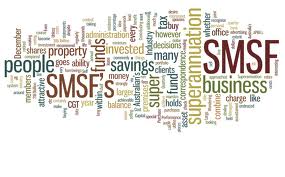If there’s one thing that never changes, it is the fact that the government continues to tinker with the super rules throughout federal budgets and election campaigns.
Changing the super rules is an easy way to raise tax revenue as any changes do not tend to cost votes. 
The reason for this is that for most people, superannuation cannot be accessed for many decades so it doesn’t have any immediate impact on their financial situation.
For these reasons, I believe the government will continue to make changes to super.
Many people are discouraged by the constant changes to superannuation and become disengaged.
Instead, I believe that you need to accept that change is part of the superannuation landscape, not become disengaged and look for ways to maximise your super – even though there might be continual changes in the future.
And you need help from an independent professional to stay on top of all these changes.
It is a too greater wealth building opportunity.
It is also reasonable to conclude that superannuation will always be concessionally taxed i.e. superannuation will be a lower tax environment.
Plus, 9.5% of your income gets deposited into super each year – which is a substantial amount – so you should make it work hard for you!
Super is designed to only help you part of the way
One of the underlying principles that is guiding both sides of politics at the moment is that superannuation shouldn’t be used as a tax haven by wealthy individuals.
That is, the tax benefits afforded to higher income earners should be proportionately the same to what lower income earners can enjoy.
In the past, superannuation rules have favoured higher income earners.
One of the most significant changes over the past decade has been the reduction in concessional contribution limits (i.e. the amount you can contribute into super and claim a tax deduction for).
Under the Howard government, the annual concessional contribution cap was $50,000.
From 1 July 2017, the concessional contribution cap will be $25,000 per year.
This means that higher income earners can contribute considerably less into super than what they were able to do in the past.
I very much doubt that we will see any significant increases in the contribution caps in the short to medium term future.
What can you do about it?
As I’ve written about in the past, the quickest and easiest way to build wealth is to utilise the power of compounding capital growth.
Compounding capital growth will, in time, do all the heavy lifting in regard to wealth accumulation.
A long-term financial consequence of a reduction in the concessional contribution cap is that it will be much harder for superannuation investors to enjoy significant wealth as a result of compounding capital growth.
Perhaps, more now than ever, the strategy of borrowing to invest (in super) becomes a more valuable investment strategy.
You will need a SMSF if you want to borrow to invest 
The only way you can borrow to invest within super is if you establish a self managed super fund (SMSF).
A SMSF typically costs $2,000 to establish (with a corporate trustee).
In terms of ongoing costs, a basic SMSF costs less than $2,000 per annum to maintain (accounting, tax, compliance fees).
Borrowing to invest in the share market
Typically, superannuation investors can leverage to a maximum ratio of 50% into the share market.
You can invest your super in various low-cost, passive (indexed) investments.
Click here for a blog about why that’s a smart thing to do.
Borrowing to invest in the property market
In terms of leverage ratios for property, most investors can borrow up to a maximum of 70% of a property’s value. 
You need to have a total superannuation balance of close to $300,000 to be able to consider an investment property strategy.
If you have materially less than $300,000, then it is very likely that you won’t have a high enough borrowing capacity to be able to afford an investment grade property.
Instead of investing in a non-investment-grade property, you are better off considering an alternative investment strategy.
Warning: borrowing can magnify losses
If we borrow to invest in appreciating assets it will magnify our returns.
However, the reverse is true also.
That is, if you gear up your super and invest in something that falls in value the borrowings will magnify your losses.
Also, investment returns are uncertain.
However, borrowing costs (interest) and investment income (dividends or rental income) are more certain.
Therefore, if you are considering borrowing with your superannuation please ensure you have a considered a low risk investment strategy.
Importantly, a borrowing strategy must be underpinned by the highest quality assets.
Consider your overall gearing ratio
It is important to consider the amount of borrowings that you currently have outside of superannuation.
That is, if you already have substantial borrowings in your personal name then I would be less inclined to recommend to you to leverage your super also.
If you are taking higher risks in your personal name then arguably you can counteract that by taking lower risks inside superannuation.
Gearing is a very effective strategy but only when used carefully.
Case Study: what are the potential outcomes
Ryan is 38 and is employed as a lawyer with a large firm earning $150,000 per year. 
Ryan has two children and a spouse, who is a stay-at-home mum.
In terms of surplus cash flow, Ryan estimates he can save $5,000 to $10,000 per year.
He doesn’t feel this is sufficient enough cash flow to be able to afford to buy an investment property in his personal name.
Ryan’s super balance is $200,000 and his spouse’s is $100,000.
I have compared three scenarios that Ryan could consider:
- Don’t change his super except for making additional contributions of $5,000 per annum (i.e. shifting most of his surplus cash flow into super); or
- Establish a SMSF with his wife and borrow to invest in property for $500,000; or
- Borrow to invest in the share market at a gearing ratio of 40% for his balance (nil gearing for his wife).
The chart below sets out Ryan and his spouses projected combined super balances (expressed in today’s dollars) by the time Ryan is aged 60.
Projected value of family’s super by age 60 (in today’s dollars)

But the numbers may have lied to us! Maybe property is $2.1 million?
To ensure that I compared apples with apples, I assumed the long term returns from property and shares to be the same.
For property, I assumed a gross rental income yield of 3% p.a. of the property’s value plus a capital growth rate of 7% p.a. (total return = 10%).
For the share market, I assumed a total income yield of 4.5% p.a. (with 50% franking credits) and a growth rate of 5.5% p.a. – so the same 10% p.a. total return. 
I believe that if you apply the right asset selection principals when selecting an investment property, you should be able to achieve a capital growth rate of 5% to 6% plus inflation (which I assume is 2.5% p.a.) – so a nominal growth rate of 7.5% to 8.5% p.a.
The capital growth generated by the All Ordinaries Index since 1980 (past 37 years) averaged out at 6.8% p.a.
The dividend yield of the All Ordinaries is currently approximately 4% p.a. so the total return over the period is approximately 10.8% p.a.
Therefore, my assumptions above for the share market are broadly in line with long term returns.
However, you may take a different view i.e. that returns in the property and/or share markets might differ from what they have been in the past.
Of course, any change to these assumptions will significantly change the result.
For example, increasing the property’s capital growth rate from 7% p.a. to 8% p.a., increases the value of Ryan’s family’s super to over $2.1 million.
Borrowing can be a substitute for additional contributions
It may not be appropriate for you to make additional contributions into super (i.e. over and above the 9.5% p.a. your employer contributes).
Maybe you have a home loan and you would rather direct your cash flow towards debt repayment (not super) – which is often a rational decision.
If you are not in a position to make additional contributions then you should consider the appropriateness of a borrowing strategy within super.
Not for everyone 
The point of this blog is to get you thinking about how the reduction in contribution caps can have an impact on your retirement savings and to suggest you might be able to take action now to offset this negative impact.
Of course, you must get independent financial advice before making any changes to your super.
Any super decisions need to be considered in the context of your overall investment/retirement strategy.
from Property UpdateProperty Update https://propertyupdate.com.au/your-super-needs-to-work-harder-consider-one-of-these-two-ideas-2/

No comments:
Post a Comment